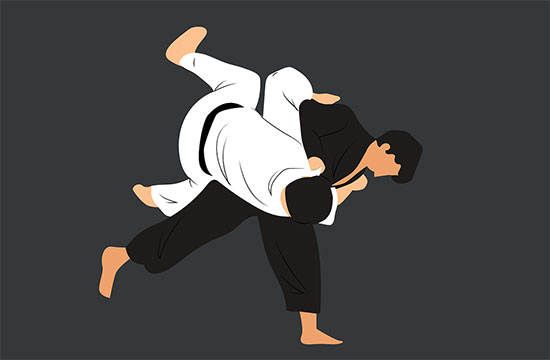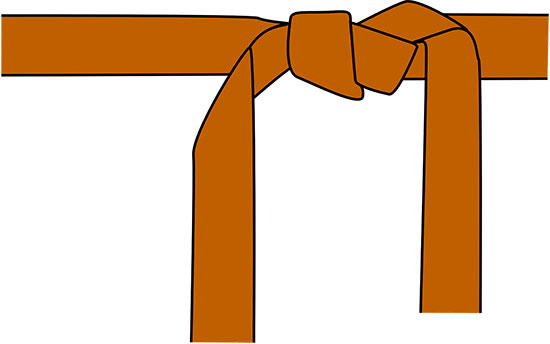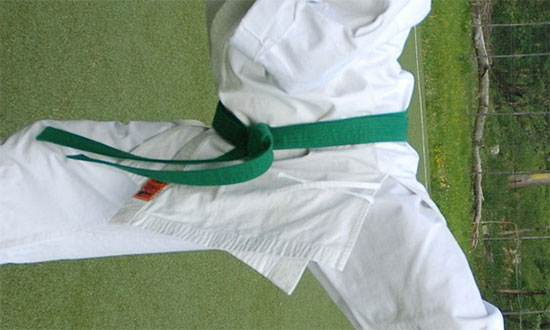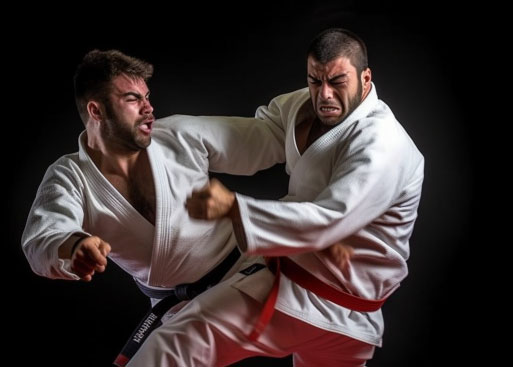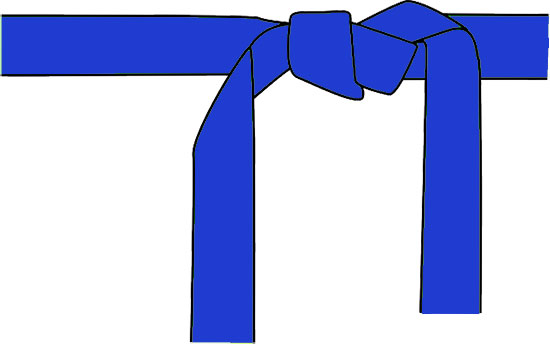Being a contact sport, judo is included in the list of traumatic martial arts. The point of the competition is to keep the opponent lying on the tatami for 30 seconds.
To defeat the enemy, grabs, throws, suffocating techniques, and holdings are used, which can turn into an accident. Let’s look at common judo injuries and how to prevent them.
Contents
Causes of injuries in judo
The philosophy of judo is not related to deliberate harm to the enemy, the martial art is created for self-defense and its essence is to succumb and win.
In judo, dangerous techniques are studied only in the form of kata and are prohibited in open competitions.
Experts believe that the main cause of injuries in this sport is not performing the techniques correctly, and mistakes in training.
Injuries are also facilitated by coaching mistakes, for example, when increasing the volume and intensity of the athlete’s physical activity.
What are the injury risks in judo?
Studying the risks of injuries in judo, experts have come to the conclusion that 65% of accidents happen during training.
Risk factors for daily activities are:
- Insufficient warm-up before training leads to injuries in the first half of the session. Most often these are sprains, dislocations, and unsuccessful falls;
- Inappropriate increase in loads. This factor affects the second half of the workout. The consequence of a sharp increase in load is fatigue, which leads to an accident;
- Techniques are not performed well. If techniques are performed incorrectly, this leads to accidents. Most often, an athlete gets dislocations, bruises, and sprains.
In 90% of cases, judokas receive injuries of mild and moderate severity, which do not require hospitalization and long rehabilitation.
Judo injury statistics
Statistics for judo injuries have been kept since 1943. The first study was conducted in Japan. Later, more than 20 studies were carried out, which showed that the average number of injuries in judokas is 44 injuries per 1000 fights.
In this case, the concept includes all injuries from scratches and bruises to serious conditions requiring hospitalization.
An analysis of accidents in martial arts at the 2008 Beijing Olympics was also carried out. According to the results of this study, 112 out of 1000 athletes suffer injuries in judo, which is lower than in other sports such as taekwondo and boxing.
Dangers for children who practice judo
Here, serious accidents are rare. With a verified training schedule and the high professionalism of the coach, it is almost impossible to get injured in the children’s section.
Here they do not practice traumatic techniques, and a sensei watches the fight every minute, reacting to violations in time.
When registering for a section, you may need insurance, that will provide the athlete with a lump sum payment in case of an accident.
Also, before starting sports activities, it is required to obtain a doctor’s admission to avoid possible complications in chronic diseases.
As in adult athletes, the localization of injuries in children practicing judo is mainly focused on the knee and shoulder joints, as well as the back.
Judo is considered the safest for children. The safety of children’s activities is ensured, first of all, by a strict prohibition on the use of choke and painful holds, grips, and traumatic throws. It can also be noted that the insurance policy has an important role here too.
Types of injuries in judo
According to the research results, judokas are most often faced with bruises, sprains, and mild concussions.
In 90%, these injuries do not pose a serious threat to health, and the athlete can return to training in 2-4 weeks. Serious accidents occur in 10% of cases, these are fractures, ligament ruptures, and severe concussions. All these injuries are covered by insurance.
Dissections and bruises
Cuts and bruises are the most common injuries for judokas. Most often, athletes are faced with light bruises and cuts that do not require treatment.
More extensive incisions may require suturing. First aid for serious cuts for stopping the blood and transporting the victim to the hospital.
Dislocations of the shoulder
Shoulder dislocations rank second among professional judo injuries. Most often, dislocations occur with an unsuccessful fall after a throw.
The main symptoms of shoulder dislocation are visible joint deformity, swelling, and pain. Treatment is based on the reduction of the joint followed by fixation.
Acromioclavicular ligament sprain
The acromioclavicular joint is located at the top of the shoulder and connects the clavicle to the scapula.
Sprains of the ligaments of the articulation can occur when falling on an outstretched arm or shoulder.
Signs of a sprain are pain, swelling, and the spread of pain to adjacent parts of the body. First aid consists of applying ice, followed by immobilization of the joint.
Impingement syndrome
This condition is common in swimmers, judokas, and throwers. This is caused by inflammation of the muscles of the rotator cuff.
The main symptom is pain that worsens when raising the arm. The syndrome requires long-term anti-inflammatory treatment and physical therapy.
The prognosis for impingement syndrome is favorable, but only with full compliance with the doctor’s recommendations.
A back injury in judo
Back injuries in judo occur during the fall and rise of the opponent. Most often these are muscle sprains and bruises that do not require hospitalization and specialized treatment. But only a doctor can determine the nature and severity of the injury.
Therefore, in case of a back injury, the victim must be taken to the hospital for diagnosis of the damage.
Backache
Back pain in judokas can be the result of an unsuccessful throw or a fall with twisting of the muscles.
Muscle sprains are treated with rest and physical therapy. The longest recovery time is required with a complete rupture of muscles or ligaments. In this case, the athlete can return to training only after full recovery.
Displacement of the intervertebral discs
Dislocation of the intervertebral discs is a serious injury that requires qualified treatment. The main symptom is sharp back pain, aggravated by movement.
With a slight displacement, pronounced symptoms may be absent. Complex intervertebral hernias require surgical treatment.
Spine injury
Spine injuries in judokas are rare. But with constant throws and falls, the risk increases against the background of existing damage to the ligaments.
Spinal injuries are life-threatening and require immediate medical attention. If a spinal injury is suspected, the victim should be immobilized and urgently taken to a hospital.
Knee injury
According to statistics, men in judo get knee injuries more often than women. 80% of knee injuries are associated with damage to the ligaments and menisci.
In 0.5% of cases, fractures, dislocations of the patella, and severe ruptures of the ligaments are recorded.
Knee ligament injury
Knee ligament injury is a common injury among judokas. The nature of the injury depends on the extent and location of the injury.
Small tears are called stretching. Such injuries do not require surgery. Serious ligament injuries are rare and are characterized by a complete rupture of the ligament.
The most dangerous of these are cruciate ligament ruptures, which have long-term consequences for the athlete.
Damage to the menisci
Most often, the lateral meniscus is injured in judokas. Rupture of the meniscus can occur with sudden movements with twisting.
Symptoms of meniscus injury include severe pain, swelling, and limited joint mobility. Mild and moderate injuries are treated with conservative methods, and severe ruptures require surgical intervention.
Dislocation of the patella
Dislocation of the patella is an injury characterized by displacement of the patella to one side with damage to the muscle structures that hold it in place.
Dislocation is accompanied by pain, swelling, and limitation of motor ability. Dislocation of the patella requires compulsory medical treatment because a violation of the recovery regime can lead to the development of chronic pathology.
Judo Injury Prevention
Prevention plays an important role in the prevention of injuries among judokas. Particular attention should be paid to the training process, namely, performing the techniques right, training, and self-insurance when falling and throwing, as well as performing a full warm-up before training.
Also, to prevent injuries, it is important to monitor the condition of the equipment in the gym, the tatami covering, and the quality of sportswear.
Recent studies have shown that a sharp decrease in an athlete’s body weight before a competition also affects the risk of injury. Thus, a 5% decrease in body weight increases the risk of injury by 20%.
